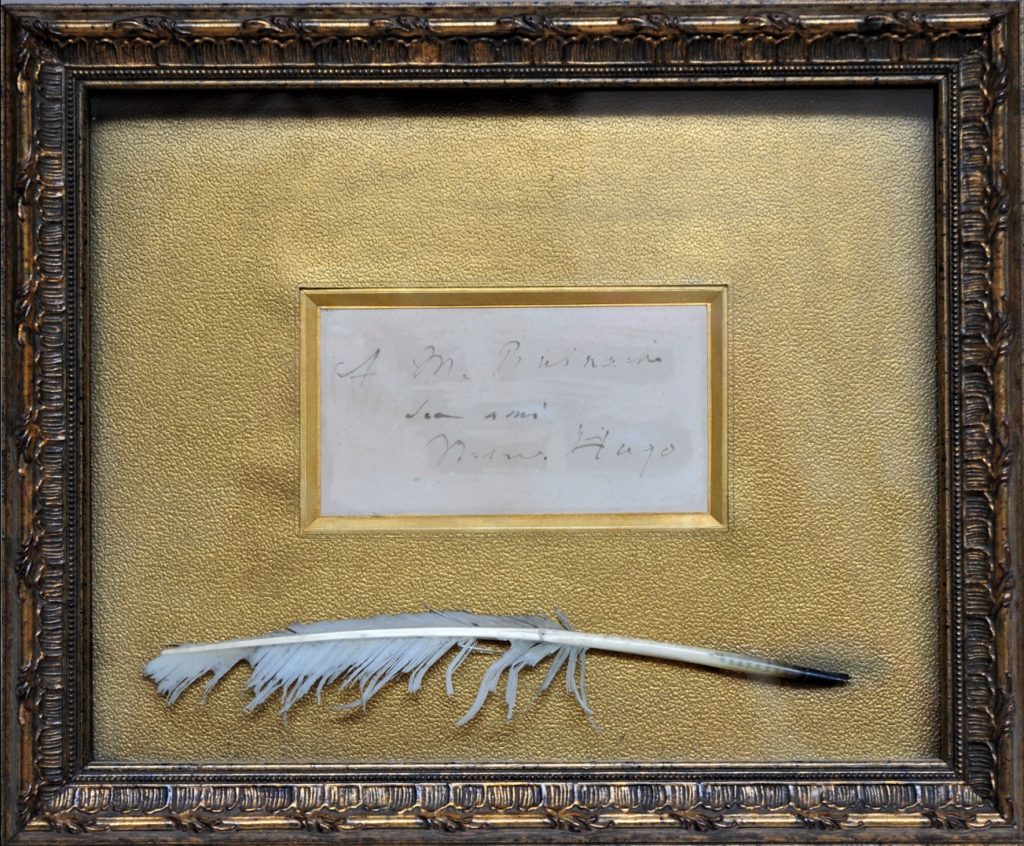NOVEL
During this 10 years of creativity, he wrote three novels. Each book caused a literary and political sensation when published.
The last day of one condemned
(1829)
Plea counters the death penalty, this work shocked as well by the bottom as by the form.
It is the account of the last moments of an unknown which will go up on the scaffold.
Notre-Dame de Paris
(1830)
The grotesque and the sublime live together in this immortal work, illustrating the will of the author: « true poetry lies in the harmony of the opposites ».
Hugo applies to it his principles of freedom in art, and revives an ignored Middle Ages. Following the publication of the novel, appropriations will be voted for the restoration of the cathedral.

Victor Hugo’s quill pen with dedication :
« To Mr. Busnach his friend Victor Hugo »
Claude Gueux
(1834)
Hugo denounces here the infernal spiral which carries out to the capital punishment a man having stolen to nourish his family, which undergoes humiliations and ill treatments in prison, and which assassinates its geolier.
« This head of the man of the people, cultivate it, clear it, water it, fertilize it, enlighten it, moralize it, use it; you will not need to cut it. »
